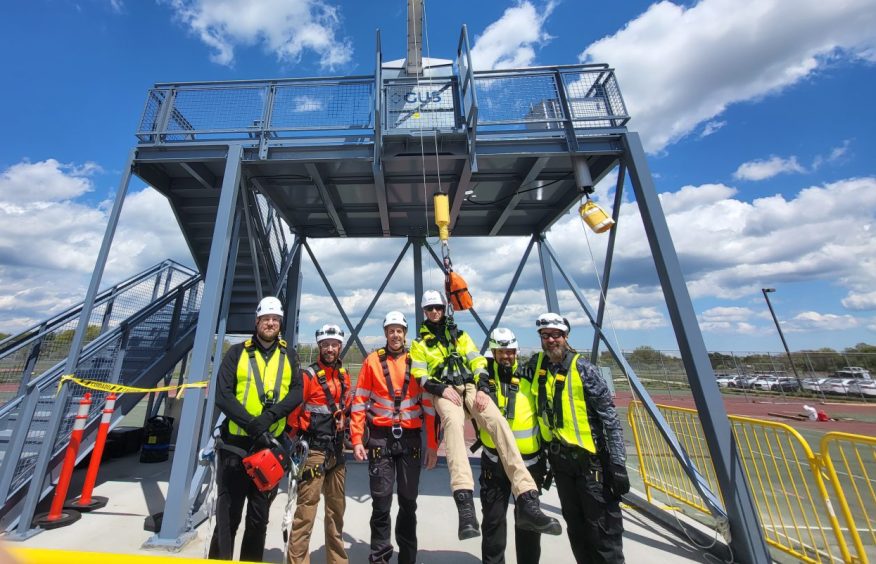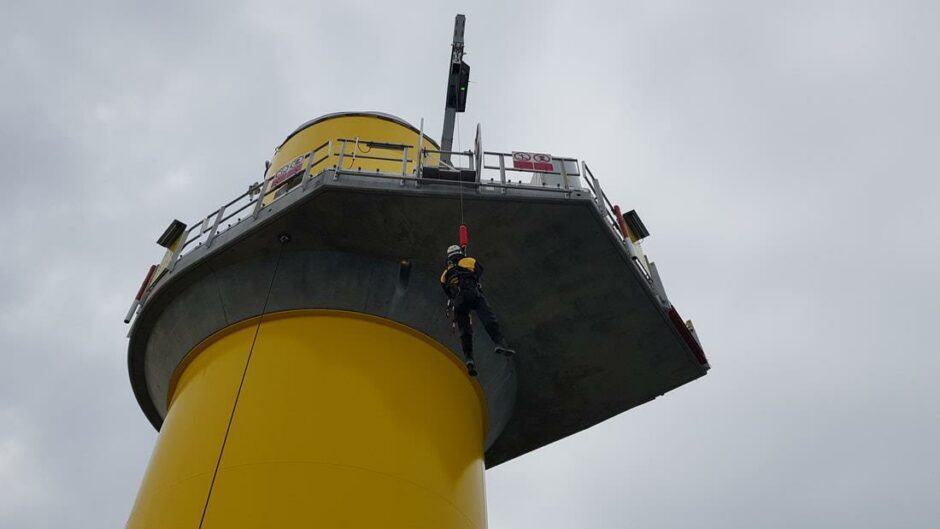
Pict Offshore has partnered with Maersk Training to help instruct workers in the use of its Get Up Safe (GUS) transfer system at US offshore wind farms.
The agreement will see Inverkeithing-based Pict pair up with Maersk and the US’ National Offshore Wind Training Center (NOWTC) to train crew in the system at a facility in Long Island, New York.
The company’s proprietary GUS solution uses a heave-compensated lifting system which allows wind technicians to move from crew transfer vessels to offshore turbines safely and quickly.
Having secured the backing of global developer Ørsted, the system is being used at the Hornsea 2 development in the UK, while export agreements will see the system deployed at 1.8GW of capacity across several of the company’s US projects, including South Fork.
Based at the NOWTC training facility on Long Island, the partnership is focused on providing online and practical training in the use of GUS systems to the vessel crews and technicians working at the South Fork scheme, which is currently under construction.
Pict managing director Philip Taylor said: “We’re delighted to see the launch of Get Up Safe training in the US. Making sure that the operators and users of the system are competent and confident is a critical part of realising the safety and cost benefits that the system has to offer windfarm developers and operators.
“Partnering with Maersk Training, a recognised global leader in training for the offshore wind sector, provides the necessary assurance of quality when taking this new solution into live operations.”
Maersk Training general manager Tonny Moeller added: “Maersk Training is very pleased to extend its collaboration with Ørsted and Eversource and work alongside Pict to bring this exciting and innovative product to a new market.
“Our team has worked hard to set up and launch GUS training with NOWTC and we’re proud to be at the leading edge of developments as offshore wind takes off in the Northeast of the USA.”
Speaking with Energy Voice earlier this year Mr Taylor made clear the firm’s global ambitions, but said it was considering options over whether it should continue to assemble units at its Scottish facility and export, or enter into agreements with local companies in other market
A larger system capable of handling cargo is also under development, with a view to having a product ready towards the end of 2024.
Recommended for you

 © Supplied by Pict Offshore
© Supplied by Pict Offshore